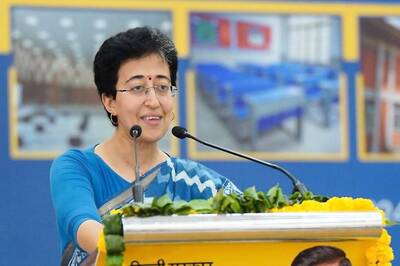
views
Navin Kumar, a former IAS officer, is the Chairman of the GST Network, a not-for-profit entity that is tasked with providing the crucial IT support systems that underpin the Goods and Services Tax. He spoke to News18’s Tushar Dhara on how the GSTN works.
Can you describe how the GST Network functions?
The GST Network is the IT backbone that undepins the new law. It comprises of a front end and a back end. The front end is the website on which tax assesses can file returns, registration and tax payment. For 95% of the tax payers the GST portal is a one stop shop, they don’t have to visit the taxman. The data that we receive on the portal is immediately passed onto the tax departments. The portal is linked to the tax departments of the Centre as well as all the states and union territories. At the backend, they do audits, adjudication etc.
Yesterday was the first day of GST. How does it feel?
This is a very important day because GST is a reality. So far as we are concerned our rollout for GST happened in November 2016, because that was the time we launched the GST portal. The idea at that time was even though the GST law was not clear one key requirement would be to migrate the existing taxpayers. So we thought rather than waiting for the law, we should start the work because the number of existing tax payers was 80 lakh (VAT, service tax and excise payers).
When did you start building the portal?
We started working on the portal from November 2015. On June 25, we started the applications for new registrations and we have already got 2.48 lakh new applications in less than a week. These are tax assesses who were not registered under the previous tax regime. All entities with a turnover of above Rs 20 lakh.
Give us some numbers?
Of the 80 lakh, 67 lakh have already migrated to the GST regime by registering in the portal. Everyday we are getting 40-45,000 registrations. Whoever wishes to migrate is welcome and it will be open for 3 months. After that entities will have to register afresh.
What does registration involve?
Each invoice issued by a company has to mention the GST identification number. We generated a unique GSTIN for all the existing tax payers and sent it to them through the tax department. At that time we called it a provisional ID since the GST law was not there. Of course, now that provisional ID is the GSTIN.
Can you tell us how the portal captures transactions under GST?
If you are a small tax payer (20-75 lakh) you can opt for composition scheme, where you pay tax at a rate of 1%,2% or 5% on your turnover and submit your return once in three months. If you’ve not opted for composition then you become a normal dealer, who can either sell only to retailers like a grocery store, department store etc. They don’t have to provide invoices, they only have to give the total turnover in the month. They have to submit returns every month.
If you are selling to another business - for instance a manufacturer selling to a wholesaler - then you have to give details of the invoice. You will mention the person to whom you have sold, the value of the item, tax paid etc. That can be done on the portal. We have an offline tool that the tax payers can download. It has an excel sheet where all the transactions can be recorded and uploaded to the portal.
Is the GST Netowrk capable of handling the rush?
Of course. There have been small complaints, like for instance with the digital signature certificate. But this is a case of the applicants not following the step-by-step procedure for using the DSC.
So the IT backbone is running smoothly.
Yes, our backend is in Bengaluru, operated by Infosys. The IT system is complicated, but that is a function of the law.
Is the IT backbone secure enough?
We are using the best available tools in the world for information security. We have adopted a layered security structure. The first layer is the perimeter security, then network security, then application security. The data is also secured. Finally when external systems connect to our system, we have ensured security there also. There is a security operation centre based out of Chennai which runs 24x7, 365 days in a year. We also got a third party audit done for securing the system.
Can you shed light on how GSTN will bring more transparency?
Every tax assesse who registers on the portal will have an account that will have 3 ledgers: A tax liability ledger, a cash ledger, which shows the cash payments they have made, and an input tax credit ledger. Under the GST regime, whatever taxes you’ve paid and whatever your liability or input tax credit you've paid, it will reflect on both the books of the assesse and the taxman. The system will match the claims to see if it correct or not. If I am a seller and put my sales data on the system. If the buyer agrees with the validity of the data according to the invoice, his input tax is assured, provided the seller has paid it. Therefore if I have sold to you and you have confirmed it, the money is automatically credited. The tax department cannot interfere. The system credits the money and it will show up in the ledger.




















Comments
0 comment